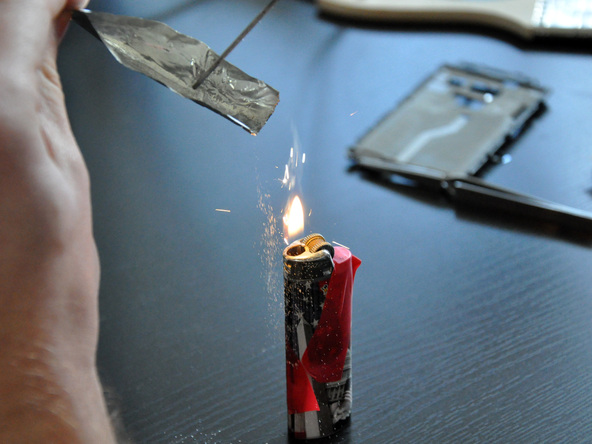Galaxy S 4G Gets Torn Down, Set on Fire (Kinda)
Yesterday was the Motorola Atrix 4G, today it’s the Samsung Galaxy S 4G.
While you might expect this teardown to be a little on the dull side, the iFixit team ensured entertaining reading by setting part of the phone on fire.
“We heard that Samsung used magnesium to create some of the structural components of the Galaxy S 4G,” explained the team. “So we had to light a part of the phone on fire. It turns out that Samsung tells no lie -- their structural framework IS made of magnesium!”
Lighter than aluminum, Samsung used magnesium for the main structural support plate that nearly every component on the phone is mounted to. Other details the teardown revealed were a 1GHz CPU, a 1650mAh fairly easily removable battery, 512MB of RAM, 4G via an ST Ericsson HSPA+ Thin Modem, and GPS. The Wi-Fi, Bluetooth 2.1 and the FM tuner are the work of Broadcom.
Head on over to iFixit for full details of the teardown.
Get Tom's Hardware's best news and in-depth reviews, straight to your inbox.

Jane McEntegart is a writer, editor, and marketing communications professional with 17 years of experience in the technology industry. She has written about a wide range of technology topics, including smartphones, tablets, and game consoles. Her articles have been published in Tom's Guide, Tom's Hardware, MobileSyrup, and Edge Up.
-
joytech22 What? BT2.1?Reply
My Galaxy S has Bluetooth 3.0, what's happening here?!
(Australian version/Optus) -
zybch Pity they haven't changed the ass-backwards placement of the speaker. Its a stupid idea to have it firing out the back of the phone.Reply -
alidan zybchPity they haven't changed the ass-backwards placement of the speaker. Its a stupid idea to have it firing out the back of the phone.Reply
if the phone was a bit fatter i would prefer the speaker to be out the back and center, that way there is no chance in hell of my fingers covering the holes no matter how i grip it for games. if i want better sound, id use headphones, if i just want to piss some time away, give me a center back speaker that i cant cover up with 1 finger. -
Travis Beane What about Tungsten or Titanium?Reply
Aluminum is ore than light enough, why go for Magnesium? Sure, it's a little stronger, and 2/3 the weight, but I'd rather a metal that can really take a beating. -
the_politician @ Travis Beane:Reply
Their decision was most likely weight based only, as magnesium typically costs just shy of double the cost of aluminium on a per tonne basis. Titanium however is a further 4 times the cost of magnesium and tungsten carbide is even more expensive. Solid tungsten carbide products are not as common as you would think; it is usually a hard-facing or coating on a cheaper material like 304, 316 or 2504 alloys. -
superblahman123 Travis BeaneWhat about Tungsten or Titanium?Aluminum is ore than light enough, why go for Magnesium? Sure, it's a little stronger, and 2/3 the weight, but I'd rather a metal that can really take a beating.I'd go with the magnesium if it increases schock resistance. Titantium and tungsten would be overkill for a phone...Reply -
g00fysmiley would love to have a actual tungsten carbide case for my phone... but would not want to pay for it... magnesium ws probably a good medium over aluminum while still being economicalReply -
@Travis BeaneReply
carbide tungsten is not only heavy but relatively brittle which makes it far from ideal for products that will sustain regular impact forces, titanium is a pig to work and machine hardens very easily which will result in it becoming more brittle
the only reason why you would choose carbide tungsten is if you require something that will be in constant contact and motion against another item, titanium would only ever be chosen if you have a product that is exposed to extreme temperature conditions (it most valuable property is the ability to maintain dimensional stability across a wide range of temperature). Both are ridiculously expensive in terms of raw material and also to work and process
magnesium is a nice compromise, though more expensive and harder to work then aluminum, still no where in the range of titanium


